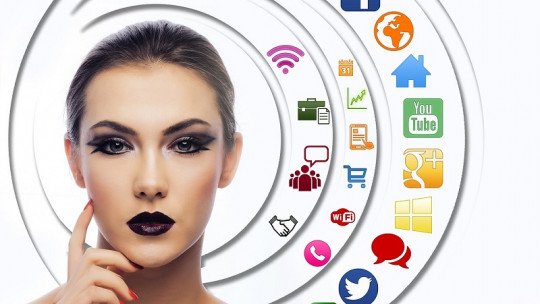
Our digital identity, our virtual “I” in the network of networks. The question is… do we know how to manage it properly?
If you were born from the 90s you have to know that you belong to what has been called Google generation or of digital natives: people who have not known the absence of the Internet. In fact, if you have reached this page and this article it is thanks to the ease that currently exists in accessing information, communication and resources.
We participate in this entire network by creating social profiles that we share with others and that show our states, thoughts, desires, emotions, interests, work or personal life. It is well known that, in their selection process, more and more companies take into account the profile of LinkedIn, Facebook either Twitter to contrast the experience that is included in our curriculum vitae when we present ourselves as applicants for a job.
Should our digital identity With our analog identity to (our “in-person self”)? Yes and no.
The digital identity
The management of our personal digital identity is defined as the ability to successfully manage one’s own visibility, reputation and privacy online These three terms include certain issues to take into account.
You are visible, if you are on the networks you are part of them. But The important thing is how that visibility benefits you or if, on the contrary, it can harm you It all depends on what you share and the pages you participate on.
Being visible is becoming more essential every day and your profile is a reflection of your dedication to a specific topic, so it adds value to what you work on or what you believe in. You can reach people and places you couldn’t reach in the analog world, as the digital age crosses borders.
Therefore, whatever your profession or passion, you can search for it, inform yourself, participate or dare to create an environment related to said topic that can become a dissemination or meeting point for people who share common interests with you, a node. The networks They give you a unique opportunity to foster good connections and look for new ones that make you improve and grow.
The added value of authenticity
However, being visible in the digital environment does not mean stopping being one in life beyond the screens We can’t always stay on the other side of the screen. We have to interact and show that the interest we show in our digital profile corresponds with our performance in real life and the consistency (or absence of contradictions) of what is shown in the digital environment.
Online reputation
The reputation of digital identity It is measured by the impact of what you share or show on your profile According to Bancal, online reputation measurement tools are blog search engines, social meta engines, written comment tracking tools, microblogs, social networks and online people search engines.
But the reputation of our identity is more than the tools in which it is compromised, it is the use we make and the behavior we have in them. And this is where, in most cases, There is an advantage that our in-person “I” does not have when it comes to displaying behaviors that may be out of place: There is the option of turning off the computer and answering later in a more reflective way and not so influenced by the negative emotions that you may experience in a specific situation. This way you can avoid having behavior that is not desirable or really useful to solve the problem and you will be able to better write an opinion or message.
Therefore, it is possible to momentarily “escape” from that situation and return to it in better conditions to be more objective in what we are going to show to others so that it is useful, beneficial and interesting. About this, Dennis O’Reilly said about Internet privacy that “the best way to protect your privacy online is to assume that you don’t have it and modify your online behavior accordingly.”
Privacy is still a value
It is very important to keep in mind that networks They should not be a place where we pour out or express our problems explicitly and openly to all people. Obviously, freedom of expression is not discussed, but we cannot make the mistake of disseminating data or issues whose dissemination causes problems and solves little or nothing. The appropriate thing is to communicate what you want to say to the specific people to whom we want to send the message.
It is about asking ourselves if our face-to-face self would communicate it in a large square where many people converge and where, in addition, the message would be recorded on the ground. Let’s not lose the excuse of meet for coffee to see the person we need to solve the problem or to simply be able to communicate our status sincerely and privately.
Some tips to manage our identity on the Internet
These are some of the recommendations for managing digital identity Correctly:
1. Honesty and skills
Create our digital identity honestly but enhancing and adapting our skills and behavior depending on the people to whom we direct the message.
2. Presence and influence
Expand our presence on the web and look for our own nest where we can spread useful information interesting and that adds value to our work or interests.
3. Suitability
Reflect before writing. TO tailor our message and share it with the people we really want to share it with It is important not to forget that problems are best dealt with personally and “live”.
4. Don’t forget in person
Taking care of the digital and the in-person: both are important scenarios where we can nourish ourselves, inform ourselves and interact. Properly managed, enhance your identity so that the message they give about you is coherent.
And this is where the doubt arises: Will we distinguish between digital identity and analog identity in the future?








